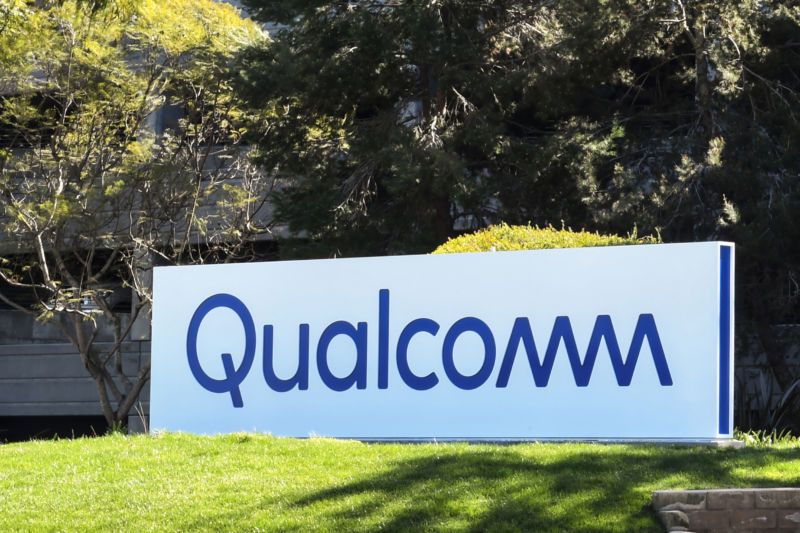

Qualcomm—one of Arm’s biggest customers—starts a RISC-V joint venture
source link: https://arstechnica.com/gadgets/2023/08/qualcomm-one-of-arms-biggest-customers-starts-a-risc-v-joint-venture/
Go to the source link to view the article. You can view the picture content, updated content and better typesetting reading experience. If the link is broken, please click the button below to view the snapshot at that time.

The slow march toward RISC-V —
Qualcomm—one of Arm’s biggest customers—starts a RISC-V joint venture
The joint venture will first target automotive, with IoT and mobile coming later.
Ron Amadeo - 8/4/2023, 4:10 PM

Arm is facing down its biggest competition ever, with the up-and-coming RISC-V architecture threatening to unseat it as the CPU at the center of almost every portable device. Now, one of Arm's biggest customers is trying out RISC-V, as Qualcomm is getting involved in a joint venture dedicated to the architecture.
The joint venture doesn't have a name yet, but Qualcomm, NXP, Nordic Semiconductor, Bosch, and memory giant Infineon are all teaming up to form a new company that Qualcomm's press release says is "aimed at advancing the adoption of RISC-V globally by enabling next-generation hardware development." At first, the group will be focused on automotive uses, with an "eventual expansion" to IoT and mobile, Qualcomm's biggest market.
Arm doesn't manufacture any chips itself and instead exists as a design and licensing operation. It licenses both the Arm architecture, allowing companies to design an Arm-compatible chip themselves (this is what Apple does), and it also licenses completed CPU designs, allowing partners like Qualcomm, Samsung, and MediaTek to produce new SoCs year after year.
Previously, we would have said Qualcomm's "next-generation hardware" project revolves around its acquisition of Nuvia, a chip design house that was founded by ex-SoC engineers from Apple, which currently makes the fastest mobile ARM chips available. Qualcomm's CPUs all use Arm's designs, and they are regularly a generation or two behind what Apple can do. If Nuvia lives up to its potential, Qualcomm's Arm chips would finally be competitive. The company says chips from Nuvia are expected to hit the market in 2024 for PCs, so Qualcomm will be sticking with Arm for a while longer. Qualcomm's "Snapdragon Automotive" products are usually based on 5-year-old phone designs, but it sounds like that's changing. A RISC-V transition, if one ever comes, is a few years down the line.
Advertisement
RISC-V is threatening Arm for a few reasons. First is its open source licensing, which potentially lets companies avoid the fees Arm charges to make any chip compatible with its instruction set. Second is that RISC-V is also a way for companies to insulate themselves from Arm, which has become an increasingly unstable hardware partner. Arm is at the center of most mobile devices, but it doesn't make a ton of money off of this licensing business.
Arm's parent company, SoftBank, seems frustrated with Arm's current business model and has been looking for a way to cash out. For a while, it looked like SoftBank was going to sell Arm to Nvidia, but after regulators shut that idea down, SoftBank moved on with plans for an IPO. Arm has now been telling customers to expect a "radical shake-up" of its business model, with the plan to charge "several times more" for chip licenses. Arm is also suing Qualcomm right now over a licensing fee disagreement related to its acquisition of Nuvia.
Reason #3 to switch to RISC-V is that Arm has been used as a chess piece in the US-China trade war. The RISC-V Foundation moved to Switzerland in 2019 and a year later rebranded to "RISC-V International," indicating that it won't be subject to US political influence. This has caused tech companies in the Arm's biggest market, China, to rally around RISC-V.
Of course, one big reason to stick with Arm is that everything works with it. Hardware, OSes, compilers, developer tools, app ecosystems, and everything else you need to make a mobile device is built up around the Arm ecosystem. This is the most important area RISC-V has to catch up in, but it's making progress.
The biggest news recently is that Google wants to make RISC-V a tier-one architecture for Android. 2D Android apps are written in Java and compiled for your processor (sometimes in the cloud!), so a sizable chunk of RISC-V app support will happen automatically. Google's porting is still a work in progress, and the latest roadmap seems to be targeting 2024 for a working public release, with things like emulators and the NDK (the SDK for non-java code like 3D games) scheduled for next year.
Recommend
About Joyk
Aggregate valuable and interesting links.
Joyk means Joy of geeK